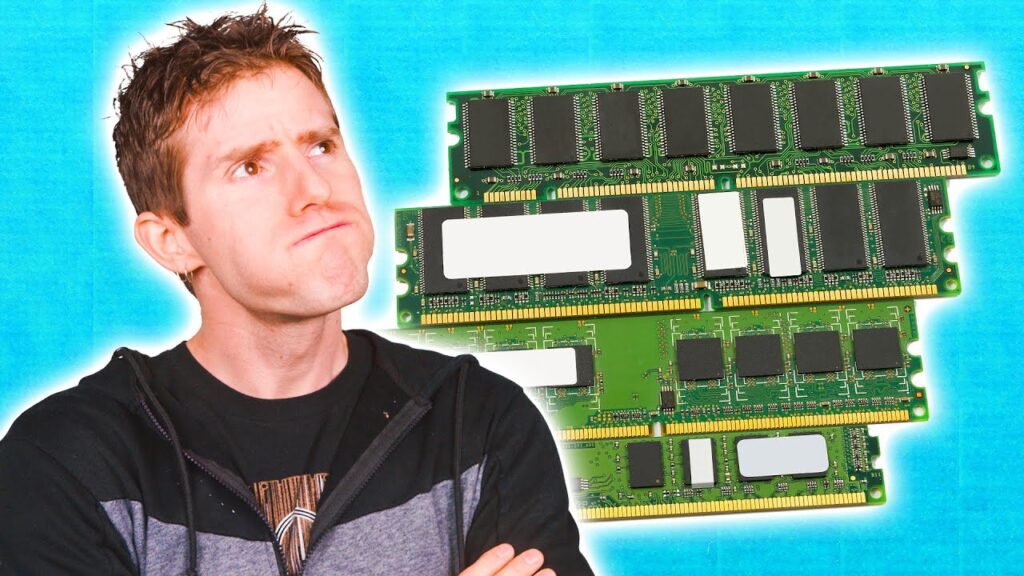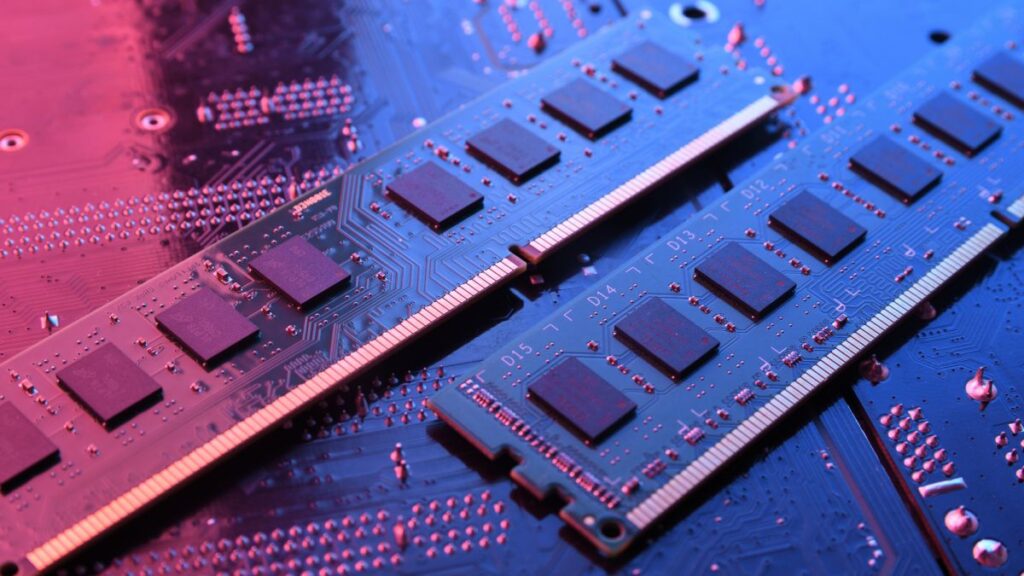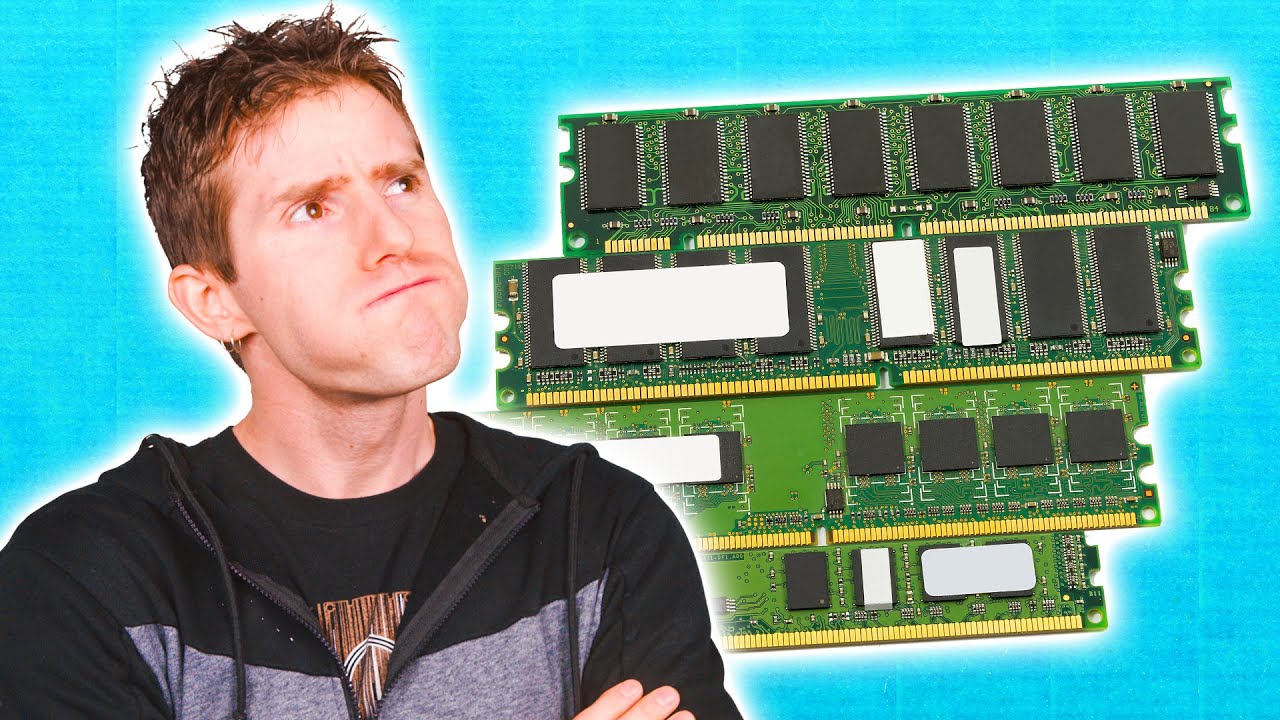So you’re in the market for a new computer, whether it’s a laptop or a desktop, and you’re faced with the age-old question: “How much RAM do I really need?” We’ve all been there, trying to find the perfect balance between price and performance. Well, lucky for you, this article is here to help! In just a short while, we’ll break down everything you need to know about RAM, why it’s important, and ultimately, how much of it you really need to ensure a smooth and efficient computing experience. So sit back, relax, and let’s unravel the mysteries of RAM together!

This image is property of www.cgdirector.com.
Understanding RAM
What is RAM?
RAM, or Random Access Memory, is a crucial component of your computer that provides temporary storage for data and instructions that are actively being used. It is like the working memory of your computer, allowing it to quickly access and manipulate information while it is in use. Unlike the long-term storage provided by your hard drive or solid-state drive, RAM is volatile and loses its contents when the power is turned off.
How does RAM work?
When you use your computer, the operating system and various applications load data and instructions from the storage drive into RAM, where they can be accessed and processed rapidly. RAM is much faster at retrieving and modifying data than the storage drives, allowing for efficient multitasking and quick response times. Additionally, RAM enables the computer to run multiple programs simultaneously, as each program is allocated a portion of the RAM to work with.
Why is RAM important?
RAM plays a crucial role in determining the overall performance and responsiveness of your computer. Insufficient RAM can lead to sluggish performance, frequent freezing or crashing of applications, and an inability to run resource-intensive programs smoothly. On the other hand, having sufficient RAM can greatly enhance your computing experience, allowing you to multitask effortlessly, run demanding applications smoothly, and have a more enjoyable gaming experience.
Factors Affecting RAM Requirements
Operating System
The choice of operating system impacts the amount of RAM required for optimal performance. Different operating systems have varied memory requirements, and newer versions of operating systems typically demand more RAM to deliver enhanced features and better performance. It is important to consider the specific RAM requirements of the operating system you plan to use to ensure smooth operation.
Usage Type
The nature of your computer usage is another important factor in determining your RAM requirements. If you primarily use your computer for basic tasks such as web browsing and email, you can get away with lower RAM capacities. However, if you engage in more resource-intensive activities such as photo and video editing, gaming, or scientific computing, you will need a higher amount of RAM to ensure optimal performance.
Multitasking
If you frequently have multiple applications running simultaneously or engage in multitasking activities, you will require more RAM. When you have multiple programs open, each program utilizes a portion of the available RAM, and insufficient memory can slow down your system or cause applications to crash. Having enough RAM allows for smooth multitasking, with each program having enough space to operate efficiently.
Software Requirements
Different software applications have varying RAM requirements. Resource-intensive applications such as video editing software or high-end games typically demand a considerable amount of RAM to function optimally. It is important to check the specific RAM requirements of the software you use frequently to ensure that your system meets the recommended specifications.
Future Proofing
When considering your RAM requirements, it is beneficial to think ahead and consider future needs. As technology advances and new software becomes more demanding, your RAM needs may increase. Investing in a slightly higher RAM capacity than your immediate needs may help future-proof your system and ensure optimal performance for a longer period without the need for immediate upgrades.
Minimum RAM Requirements
Basic Usage (Web Browsing, Email)
For basic everyday tasks such as web browsing, email, and light document editing, a minimum of 4GB of RAM is generally sufficient. This capacity allows you to smoothly navigate through websites, check emails, and use productivity tools without experiencing significant performance issues.
Office Work (Word Processing, Spreadsheets)
For office work that involves word processing, spreadsheet management, and presentation creation, a minimum of 8GB of RAM is recommended. This additional capacity allows for the smooth operation of office suites and ensures that you can work on multiple documents simultaneously without any noticeable slowdown.
Media Consumption (Streaming Videos, Music)
If you frequently stream videos, listen to music, or engage in other media consumption activities, a minimum of 8GB of RAM is also recommended. This capacity allows for smoother playback of high-definition videos and ensures that you can multitask effectively while enjoying your media.
Casual Gaming
For casual gaming, a minimum of 8GB of RAM is recommended. This capacity allows you to play less demanding games smoothly, without experiencing significant lag or performance issues. However, if you plan to play more demanding games or engage in intensive gaming sessions, a higher RAM capacity, such as 16GB, may be more suitable.
Recommended RAM for Different Use Cases
Photo/Video Editing
For photo and video editing, a minimum of 16GB of RAM is recommended. These tasks often require the manipulation of large file sizes and the use of resource-intensive software. Having an ample amount of RAM ensures smooth editing processes and reduces the risk of system slowdowns or crashes.
Graphic Design
Graphic design tasks, including using software like Adobe Illustrator or Photoshop, require a minimum of 16GB of RAM. Graphic design projects often involve working with multiple layers, effects, and high-resolution images. With sufficient RAM, you can seamlessly handle complex design tasks without encountering performance bottlenecks.
Gaming (AAA Titles, VR)
For gaming enthusiasts and those who play AAA titles or use virtual reality (VR) devices, a minimum of 16GB of RAM is recommended. Modern games and VR experiences often require significant amounts of memory to load and render complex graphics and environments. Having sufficient RAM enables a smoother gaming experience without frustrating lags or crashes.
Programming and Software Development
For programming and software development tasks, a minimum of 16GB of RAM is also recommended. These activities often involve running integrated development environments (IDEs), compilers, and virtual machines simultaneously. Sufficient memory ensures that you can compile code, run tests, and work on multiple projects concurrently without compromising performance.
Virtualization and Emulation
If you frequently work with virtual machines or emulate other operating systems, a minimum of 16GB of RAM is recommended. Virtualization and emulation consume a substantial amount of memory to create a separate environment within your system. Having ample RAM allows for smoother operation and eliminates potential performance issues.
Data Analysis and Scientific Computing
For data analysis and scientific computing tasks, a minimum of 16GB of RAM is typically adequate. These activities often involve working with large datasets and running resource-intensive algorithms. Having enough RAM ensures that your analyses and computations can be completed efficiently, without excessive swapping to disk that can significantly slow down the process.

This image is property of static0.makeuseofimages.com.
RAM Configurations for Specific Needs
Low-End Devices (Laptops, Tablets)
Low-end devices such as entry-level laptops and tablets generally come with 4GB to 8GB of RAM. While these amounts may be sufficient for basic tasks, they often limit the device’s ability to handle multitasking or more resource-intensive applications. If you are using a low-end device, consider upgrading the RAM to at least 8GB to improve performance and ensure a smoother user experience.
Mid-Range Devices (Home PCs, Workstations)
Mid-range devices, such as home PCs and workstations, typically come with 8GB to 16GB of RAM, which can handle a wide range of tasks and applications smoothly. If you primarily engage in basic office work or moderate gaming, 8GB to 16GB should be sufficient. However, if you frequently engage in more demanding activities, such as video editing or gaming, opting for 16GB or more is advisable.
High-End Devices (Gaming PCs, Content Creation)
High-end devices, such as gaming PCs or content creation workstations, often require a minimum of 16GB or more of RAM. These systems are built to handle demanding tasks, such as running resource-intensive games, rendering high-resolution graphics, or working with large multimedia files. Having a higher RAM capacity ensures optimal performance and allows you to take full advantage of the system’s capabilities.
Servers and Enterprise Systems
Servers and enterprise systems have diverse requirements depending on the specific usage demands and the number of users they need to support. In these scenarios, RAM requirements can vary greatly, ranging from a few gigabytes to hundreds of gigabytes or even terabytes. Determining the appropriate RAM configuration for servers and enterprise systems should take into account the expected workload, the number of users, and any specific requirements dictated by the software or applications being used.
Determining RAM Requirements for Gaming
Minimum RAM for Gaming
The minimum RAM requirement for gaming depends on the specific game and its system requirements. In most cases, modern games recommend at least 8GB of RAM. However, to ensure optimal performance and future-proofing, it is advisable to have a minimum of 16GB of RAM for gaming. This allows games to run smoothly, even in resource-intensive scenarios, and provides headroom for future games that may have higher memory demands.
Recommended RAM for Gaming
For gamers, a recommended RAM capacity for an improved gaming experience is 16GB to 32GB. Games are becoming increasingly demanding and often require more memory to ensure smooth gameplay and fast loading times. Having additional RAM allows for seamless multitasking while gaming, such as running background applications, voice chat services, or streaming software, without causing any noticeable performance degradation.
Factors Impacting Gaming Performance
Apart from RAM capacity, other factors can impact gaming performance. These include the graphics card, CPU, storage drive, and system optimization. While RAM is crucial, the overall gaming experience also depends on the performance of these other components. Opting for faster RAM modules with higher clock speeds may provide a slight performance boost in some scenarios, but the gains may not be as significant as upgrading the graphics card or CPU.

This image is property of i.ytimg.com.
RAM Upgrade Considerations
Physical Limitations of the System
Before upgrading your RAM, it is essential to check the physical limitations of your system. Some devices, particularly laptops and older computers, may have a maximum RAM capacity that cannot be exceeded. Consult your device’s specifications or contact the manufacturer to determine the maximum amount of RAM your system can support.
Compatibility and Expansion Slots
When upgrading RAM, it is important to ensure compatibility with your system. Determine the type of RAM modules supported by your system, such as DDR3 or DDR4. Additionally, check the number of available RAM slots and the maximum capacity each slot can support. This information will help you choose the right RAM modules and configure them properly for optimal performance.
Cost Factors
RAM prices can vary depending on capacity, speed, and brand. When considering a RAM upgrade, factor in your budget and weigh the price-performance ratio. Evaluate the benefits of upgrading to a higher RAM capacity or faster RAM modules, considering the potential improvement in performance and the cost involved.
Benefits of Upgrading RAM
Upgrading your RAM can provide several benefits. Firstly, it allows your system to handle more demanding tasks without experiencing performance bottlenecks. Applications will load faster, and overall system responsiveness will improve. Additionally, having ample RAM allows for better multitasking, smooth running of multiple applications simultaneously, and a more enjoyable computing experience.
Effects of Insufficient RAM
Decreased System Performance
Insufficient RAM can significantly impact system performance. When your PC runs out of available memory, it compensates by using your storage drive as a temporary substitute called virtual memory. Since storage drives are slower than RAM, this creates a bottleneck and slows down the overall system performance. Applications may take longer to open, and multitasking becomes sluggish.
Frequent Freezing and Crashing
When memory resources are depleted, applications may freeze, crash, or become unresponsive. This occurs because the system is unable to allocate enough memory to keep all active processes running smoothly. If you frequently encounter freezing or crashing applications, it may be a sign that your system’s RAM is insufficient for the tasks you are performing.
Inability to Run Resource-Intensive Applications
Insufficient RAM may prevent you from running resource-intensive applications altogether. Software such as video editing programs, complex games, or virtual machines often demand more memory to operate smoothly. If you encounter error messages or experience significant performance degradation when using these applications, it may be an indication that your RAM is insufficient.

This image is property of cdn.mos.cms.futurecdn.net.
Effects of Excessive RAM
No Significant Performance Gains
While having more RAM than necessary does not necessarily harm your system, it typically does not lead to significant performance gains. Once you have enough RAM to meet the demands of your usual tasks and applications, increasing the capacity further is unlikely to result in noticeable improvements in everyday performance.
Wasted System Resources
Excessive RAM can be considered wasted system resources. If your system has a surplus of unused memory, it is not actively contributing to the smooth operation of your applications and tasks. This unused memory could be utilized more effectively by other processes or allocated to other hardware requirements.
Underutilized Hardware
Having excessive RAM may imply that other hardware components, such as the CPU or graphics card, are being underutilized. In a balanced system, all components should work together harmoniously to provide optimal performance. If you have a significantly higher RAM capacity than required, it could indicate an imbalance in the system’s resources.
Future RAM Requirements
Advancements in Technology and Software
As technology continues to advance, software and applications are becoming increasingly complex and resource-intensive. To accommodate these advancements, future RAM requirements are likely to increase. Operating systems, productivity software, gaming engines, and other applications will demand more memory to provide enhanced features and better performance.
Operating System Upgrades
Upgrading to newer versions of operating systems may also necessitate an increase in RAM requirements. Operating system upgrades often introduce new features and improvements that require additional memory. Staying up to date with the latest operating system can provide enhanced security, functionality, and performance, but it may also lead to higher RAM demands.
Evolving User Needs
As users’ needs and expectations evolve, so will the RAM requirements. With the proliferation of higher-resolution displays, virtual reality, machine learning, and other emerging technologies, the demand for RAM will continue to grow. Additionally, as individuals increasingly engage in tasks that require more memory, such as video editing or data analysis, the need for larger RAM capacities will become more prevalent.
In conclusion, understanding RAM and its impact on your computer’s performance is crucial when determining your system’s requirements. Factors such as the operating system, usage type, multitasking needs, software requirements, and future proofing considerations should be taken into account when deciding on the appropriate RAM configuration. While insufficient RAM can lead to performance issues and the inability to run resource-intensive applications, excessive RAM does not necessarily result in significant performance gains and may underutilize other system resources. As technology and software continue to advance, and user needs evolve, RAM requirements are likely to increase, emphasizing the importance of considering future needs when determining the appropriate RAM configuration for your system.

This image is property of www.cgdirector.com.
